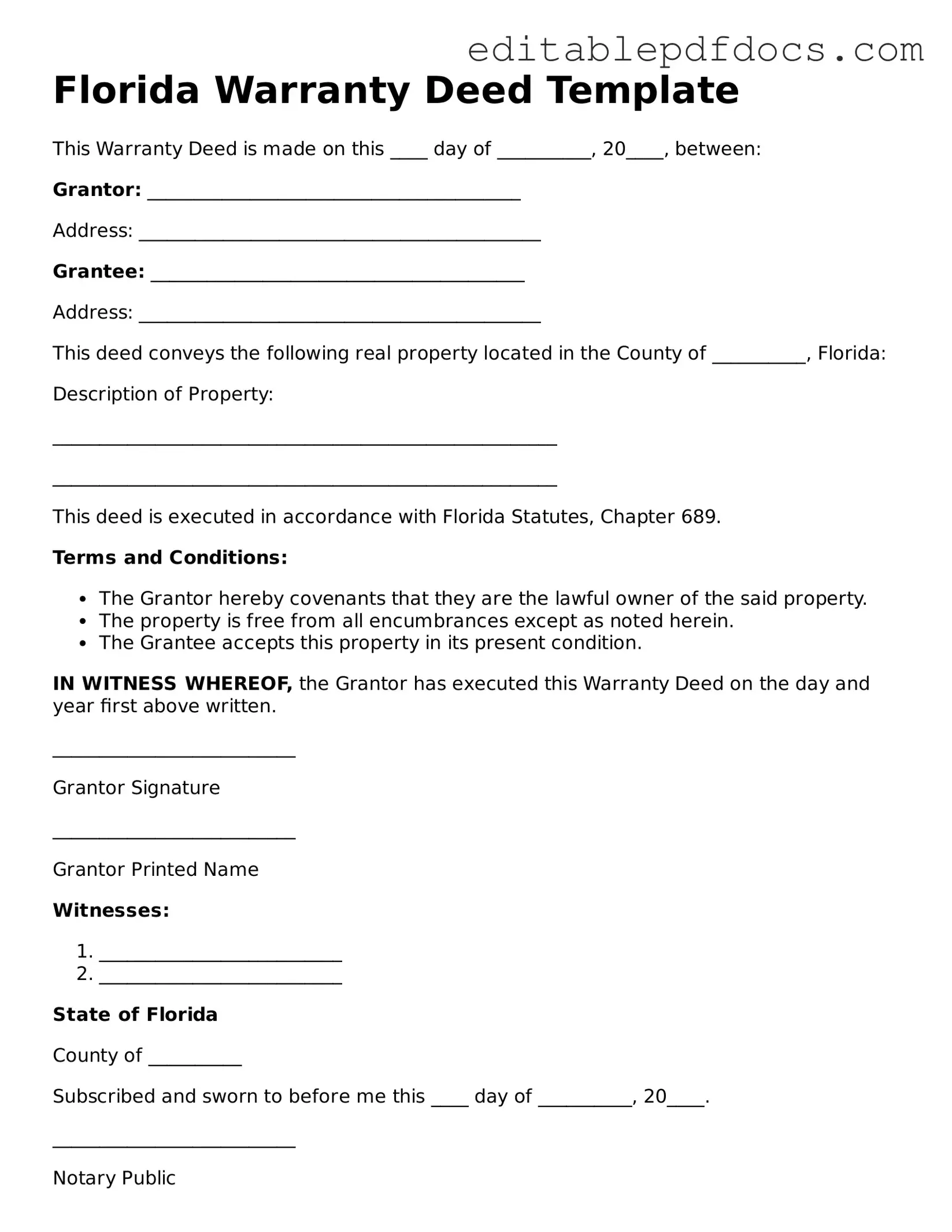Filling out a Florida Deed form can seem straightforward, but many people make common mistakes that can lead to significant issues. One frequent error is failing to include the correct legal description of the property. This description must be precise and can often be found in the original deed or property tax records. Without it, the deed may not be valid.
Another mistake is not properly identifying the grantor and grantee. The grantor is the person transferring the property, while the grantee is the person receiving it. It's crucial to use full legal names and ensure that they match the names on official documents. Any discrepancies can create confusion and legal complications.
People often overlook the need for notarization. A Florida Deed must be signed in front of a notary public. Failing to do this can render the deed unenforceable. It's essential to ensure that all signatures are properly witnessed and notarized before submitting the document.
Some individuals also forget to include the date of the transaction. The date is important for establishing the timeline of ownership and can affect legal rights. Always double-check that the date is clearly stated on the form.
Another common error involves the omission of the property’s parcel number. This number is vital for identifying the property within the county's tax records. Without it, the deed may not be properly recorded, leading to future complications.
People sometimes fail to check for any liens or encumbrances on the property before completing the deed. If there are existing debts tied to the property, these can affect the transfer. It’s wise to conduct a title search to ensure a smooth transaction.
Additionally, some fill out the form without understanding the implications of the type of deed they are using. Different types of deeds, such as warranty deeds or quitclaim deeds, have various legal consequences. Choosing the wrong type can affect the rights of both parties involved.
Finally, many forget to file the deed with the appropriate county clerk's office after it has been completed and notarized. Filing is essential to make the transfer official. Without this step, the deed may not be recognized by the state, leaving ownership in question.
